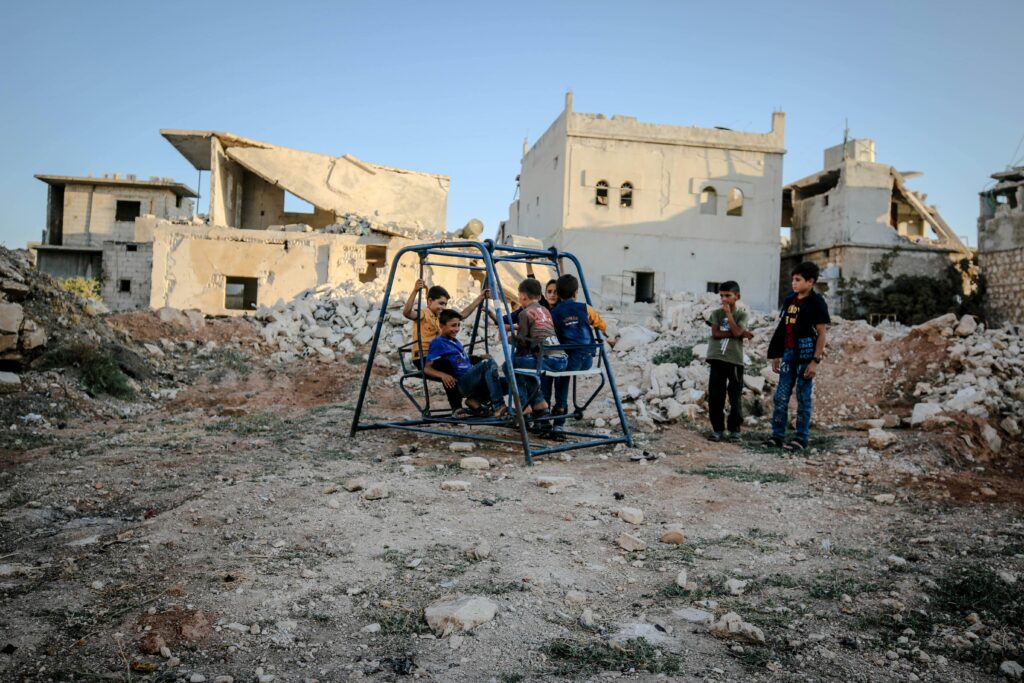Children in the Line of Fire: On Violence, Guilt, and the Work of Containment
Reflections Inspired by Contemporary Psychoanalytic Thought
What happens to a child’s developing mind when exposed to chronic violence—whether embedded in the family system, the surrounding community, or a wider political context? Psychoanalytic perspectives offer profound insights into how such environments shape children’s psychic reality and behaviors.
Layers of Trauma and Communication
Children affected by ongoing violence do not experience isolated traumas but often live within systems where danger and fear are constant. In these contexts, a child’s actions or symptoms may be the only way to communicate inner pain that cannot yet be put into words (Klein, 1946; Porges, 2011). These behaviors become symbolic expressions of unspeakable experiences.
The Weight of Guilt: Personal and Collective
Unconscious feelings of guilt—sometimes linked to paternal figures or societal roles—can influence family dynamics and emotional availability. When emotional nourishment is absent or withheld, children internalize complex emotional landscapes where vulnerability feels unsafe, and power or control may become defenses (Bion, 1962; Klein, 1957). This internal rigidity can inhibit mourning and emotional growth (Laub, 1995), often leading to alienation from self and others (Winnicott, 1965).
The Analyst’s Role: Bearing the Burden of Trauma
Working clinically with children impacted by such profound adversity requires therapists to engage with intense projections, fantasies, and the often overwhelming affective experience these young patients carry (Benjamin, 2018; Ogden, 1997). The therapeutic task involves witnessing not only the child’s words or actions but also what has been lost or silenced within them. The unspeakable often manifests somatically—in nightmares or repetitive behaviors—and demands a reparative response that helps restore meaning and safety (Van der Kolk, 2014; LaCapra, 2001).
Global Perspectives on Containment and Healing
Psychoanalytic work across diverse cultural and political contexts—from war-torn regions to communities affected by systemic violence—demonstrates a shared commitment: to treat children not as damaged or lost, but as carriers of essential truths about human resilience and suffering (Volkan, 2001; Agger, 2005). Symptoms, though painful, may function as fragile links to unbearable experiences that cannot yet be consciously held.
Holding the Unholdable
One of the most profound challenges is working with children who have been both victims and perpetrators of violence, whose play and behavior often reveal self-directed hatred, shame, and terror. The analytic space becomes one where these unbearable realities can be held and gradually symbolized, allowing new meanings and relational possibilities to emerge (Ogden, 2004; Laub, 1995). This work is deeply ethical—aiming toward symbolic restoration and helping children build safer, more integrated senses of self (Bick, 1968; Winnicott, 1965).
Conclusion
Psychoanalysis offers not only a framework for understanding but a method of containing and transforming trauma. It calls upon clinicians to listen deeply and courageously to what is most painful—without turning away—honoring the resilience of children growing up in the line of fire.
References
Agger, I. (2005). Cultural Trauma and the Global Condition. University of California Press.
Benjamin, J. (2018). Beyond Doer and Done To: Recognition Theory, Intersubjectivity and the Third. Routledge.
Bick, E. (1968). The Experience of the Skin in Early Object-Relations. International Journal of Psychoanalysis, 49, 484–486.
Bion, W. R. (1962). Learning from Experience. Heinemann.
Bollas, C. (1987). The Shadow of the Object: Psychoanalysis of the Unthought Known. Columbia University Press.
Green, A. (1999). The Fabric of Affect in the Psychoanalytic Discourse. Karnac.
Klein, M. (1946). Notes on Some Schizoid Mechanisms. International Journal of Psycho-Analysis, 27, 99–110.
Klein, M. (1957). Envy and Gratitude and Other Works 1946-1963. The Hogarth Press.
LaCapra, D. (2001). Writing History, Writing Trauma. Johns Hopkins University Press.
Laub, D. (1995). Truth and Testimony: The Process and the Struggle. In C. Caruth (Ed.), Trauma: Explorations in Memory (pp. 61–75). Johns Hopkins University Press.
Ogden, T. H. (1997). The Matrix of the Mind: Object Relations and the Psychoanalytic Dialogue. Jason Aronson.
Ogden, T. H. (2004). The Analytic Third: Working with Intersubjective Clinical Facts. International Journal of Psychoanalysis, 85, 857–877.
Porges, S. W. (2011). The Polyvagal Theory: Neurophysiological Foundations of Emotions, Attachment, Communication, and Self-Regulation. W.W. Norton.
Van der Kolk, B. A. (2014). The Body Keeps the Score: Brain, Mind, and Body in the Healing of Trauma. Viking.
Volkan, V. (2001). Bloodlines: From Ethnic Pride to Ethnic Terrorism. Farrar, Straus and Giroux.
Winnicott, D. W. (1965). The Maturational Processes and the Facilitating Environment. International Universities Press.
